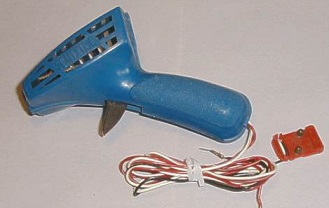water temp ggauge readfing too high - how do I correct?
Discussion
While on Jools rolling road it was noticed that the car temperature gauge was reading very high compared to the readings on the rolling road VDU and confirmed by the cut in /out of the electric water pump and fan controller.
When the Rolling road and fan controller were reading 85degC the temperature gauge was reading halfway through the red (approx. 110degC) I believe the oil temperature settled at about 90.
So I think I have the wrong sender but don't know which would be the correct one. Would it be possible to fit a resistor instead? If yes has anyone have an adjustable rheostat I can borrow? I'm in Tesside
When the Rolling road and fan controller were reading 85degC the temperature gauge was reading halfway through the red (approx. 110degC) I believe the oil temperature settled at about 90.
So I think I have the wrong sender but don't know which would be the correct one. Would it be possible to fit a resistor instead? If yes has anyone have an adjustable rheostat I can borrow? I'm in Tesside
I had this problem on the Tasmin. I tried a 2 ohm ballast resistor but it didn't change the reading on the gauge.
I suggest you measure the resistance of the sender you have and then estimate how much more resistance you might need to get a correct reading. Then, if you have a friendly local motor factor, you can take your AVO in and test other suitable senders to see which one is closest to your guesstimate. Then it's trial and error.
No doubt "someone" will come up with a complicated resistance calculation to give you another answer but, based on practical experience ( ) this ones down to trial and error
) this ones down to trial and error 
The other option is the little gizmo from Car Builder Solutions which adjusts the reading on the gauge. But where's the fun in that?
I suggest you measure the resistance of the sender you have and then estimate how much more resistance you might need to get a correct reading. Then, if you have a friendly local motor factor, you can take your AVO in and test other suitable senders to see which one is closest to your guesstimate. Then it's trial and error.
No doubt "someone" will come up with a complicated resistance calculation to give you another answer but, based on practical experience (
 ) this ones down to trial and error
) this ones down to trial and error 
The other option is the little gizmo from Car Builder Solutions which adjusts the reading on the gauge. But where's the fun in that?
If you're up for a little research, the things you need to know are the resistance across the disconnected sender at various temperatures, and what resistance is needed at each temperature to make the gauge read correctly. Armed with that at eg 20C increments, it would be possible to tell whether the readings can be corrected by a passive circuit.
Suppose I can remove the sender and place in a pan of water an a thermometer. Raise and stir try to regulate the gas heating to hold a steady ish temperature while I take a resistance reading. Should give a reasonable indication. The difficult part would be the gauge as I do not have access to numerous resistors bit seeing what the sender is will give me the approximate range needed. Would that work?
Personally I think you'll struggle to get any accurate readings fannying around with pans of hot water but ............
From your other post "how do I calibrate a water temperature gauge?" do you know what sender unit you have?
may be a little "off piste" but when I wanted a cheap variable resistor to dim (yes, dim on a TVR) some dash lights this did the trick. got a measurement and bought appropriate resistor

Top Tip take the spring out and it will stay where you set it
Even further off piste, if a dash warning light is glaringly bright try a 24 volt bulb
From your other post "how do I calibrate a water temperature gauge?" do you know what sender unit you have?
may be a little "off piste" but when I wanted a cheap variable resistor to dim (yes, dim on a TVR) some dash lights this did the trick. got a measurement and bought appropriate resistor


Top Tip take the spring out and it will stay where you set it

Even further off piste, if a dash warning light is glaringly bright try a 24 volt bulb

Edited by phillpot on Tuesday 18th February 13:48
magpies said:
Suppose I can remove the sender and place in a pan of water an a thermometer. Raise and stir try to regulate the gas heating to hold a steady ish temperature while I take a resistance reading. Should give a reasonable indication. The difficult part would be the gauge as I do not have access to numerous resistors bit seeing what the sender is will give me the approximate range needed. Would that work?
That would be fine.I haven't measured the sender on mine but I expect you'll find it is a thermister ranging from a few kOhms at freezing, roughly halving for every 20C temperature increase and down to a couple of hundred Ohms at operating temperature. If you get any reading at all from the gauge with the sensor connected and can measure the sensor resistance round about that temperature, that would give you a ball park for the resistance range you're looking at.
Gassing Station | S Series | Top of Page | What's New | My Stuff




